How Much Garlic Seed Can You Plant per Acre?
When it comes to planting garlic, the quantity of seed per acre is a crucial factor for a bountiful harvest. In this article, we'll find out the recommended amount of garlic seed to plant per acre, highlighting efficient use of space and potential yield.
An acre typically accommodates about 600–800 pounds of garlic seed. This means planting approximately 5–7 cloves per square foot, depending on the garlic variety and desired spacing. Closer spacing yields smaller bulbs suitable for the market, while wider spacing allows for larger bulbs.
If you're planting a larger variety like the Italian Red, you might be on the lower end of that range due to the bigger size of the cloves, whereas a smaller clove variety could allow for more intensive planting. Let's carefully calculate and consider your conditions so you can maximize your garlic yield per acre.
Summary
- Traditional spacing for garlic is 18–inch rows with 6–8-inch spacing between cloves, allowing 29,040–21,780 plants per acre. This provides ample room for growth.
- Intensive spacing uses narrower 8–12 inch row spacing and 4–6 inch clove spacing in raised beds, allowing 43,560–54,450 plants per acre. This maximizes yield in a small space but requires careful management.
- To calculate garlic seed needs, estimate the desired yield in pounds and multiply by 5–10 lbs of seed per 1,000 square feet planted. For a 10,000-lb yield, plant 2,000–2,500 lbs of seed.
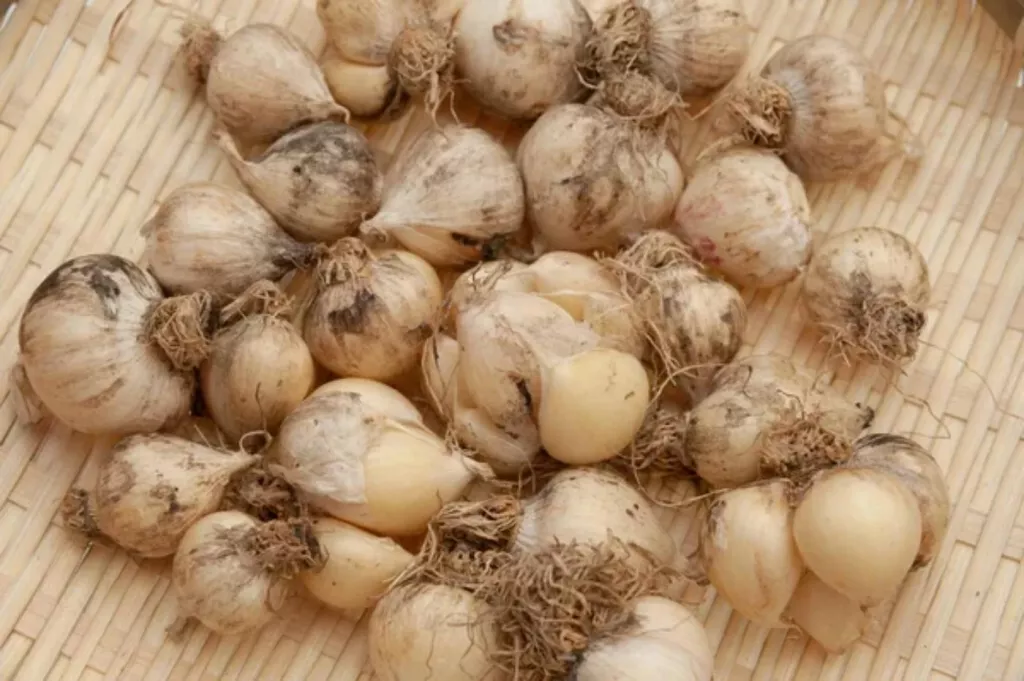
On this page:
Garlic Seed Density per Acre
When planning your garlic farm, it's basic knowledge to know how much seed garlic to plant and arrange the cloves appropriately to maximize yields.
Spacing guidelines for garlic seeds
For optimal growth, garlic cloves should be spaced in a way that allows each plant enough room to mature. Generally, you'll find that spacing is divided into two main categories:
Traditional spacing in garlic cultivation
In traditional spacing, the focus is on giving each plant ample room to develop without too much competition for resources.
| Row Spacing (inches) | Clove Spacing (inches) | Plants per Acre |
|---|---|---|
| 18 | 6 | about 29,040 |
| 18 | 8 | about 21,780 |
- Row spacing: The distance between rows is typically 15-18 inches. This space allows for sufficient airflow, reducing the risk of disease and making it easier to manage the crop, for instance, during weeding or harvesting.
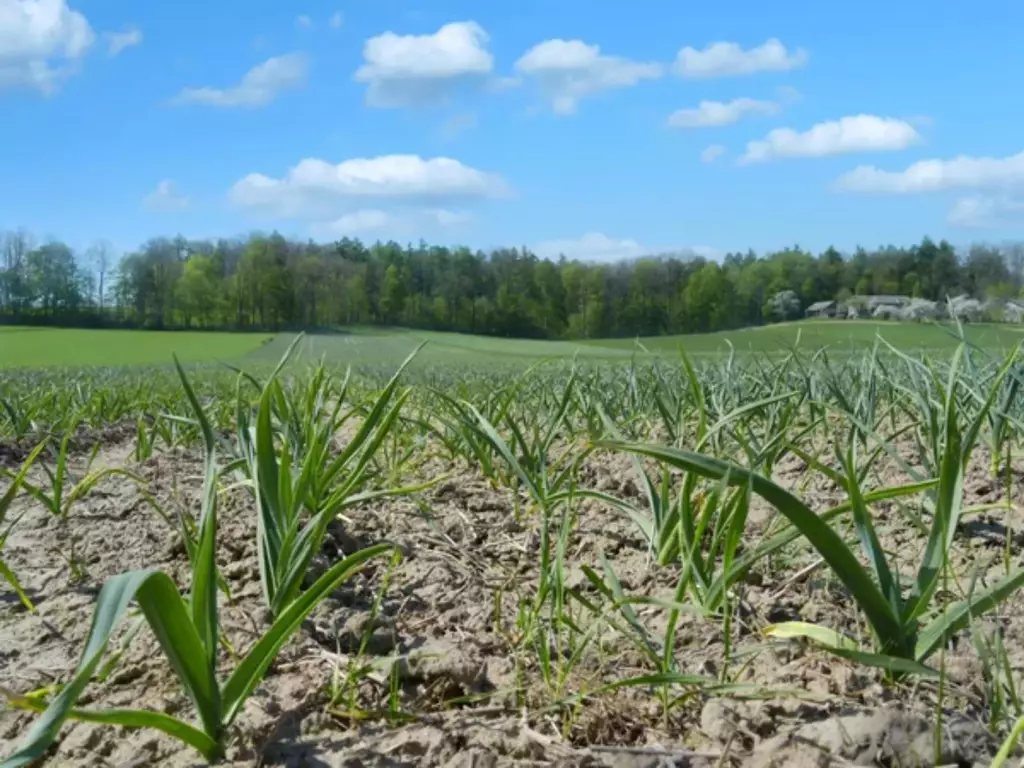
-
Clove spacing: Within each row, cloves are spaced 6-8 inches apart. This distance is chosen to balance the need for each plant to have enough soil nutrients and root space with the desire to use the available land efficiently.
-
Plants per acre: With 18-inch row spacing and 6-inch clove spacing, you can plant about 29,040 plants per acre.
Reducing the clove spacing to 8 inches in the same row spacing lowers the density to about 21,780 plants per acre.
This reduction might be beneficial for larger garlic varieties needing more space.
Intensive spacing for garlic planting
Intensive spacing is more common in smaller-scale or specialized garlic farming, focusing on maximizing the use of space.
| Bed Width (inches) | Row Spacing (inches) | Clove Spacing (inches) | Plants per Acre |
|---|---|---|---|
| 48 | 12 | 4 | about 43,560 |
| 48 | 8 | 6 | about 54,450 |
-
Bed width: A typical bed width in intensive planting is 48 inches. This wider bed allows multiple rows of garlic to be planted in a single bed.
-
Row spacing: Rows are placed closer together, typically 8-12 inches apart. This closer spacing is feasible due to the controlled environment of a raised bed, which often has better soil conditions and easier access for maintenance.
-
Clove spacing: Cloves are spaced 4-6 inches apart in intensive planting. This closer spacing requires careful management to ensure each plant receives enough nutrients and water.
-
Plants per acre: With 12-inch row spacing and 4-inch clove spacing, you can plant about 43,560 plants per acre.
Reducing the row spacing to 8 inches and increasing the clove spacing to 6 inches raises the density to about 54,450 plants per acre.
This is the most intensive use of space and requires meticulous management to maintain plant health.
Calculating Garlic Needs
When planning your garlic crop, you need to calculate the amount of garlic needed to meet your goals, considering the yield per acre and the number of pounds you aim to harvest.
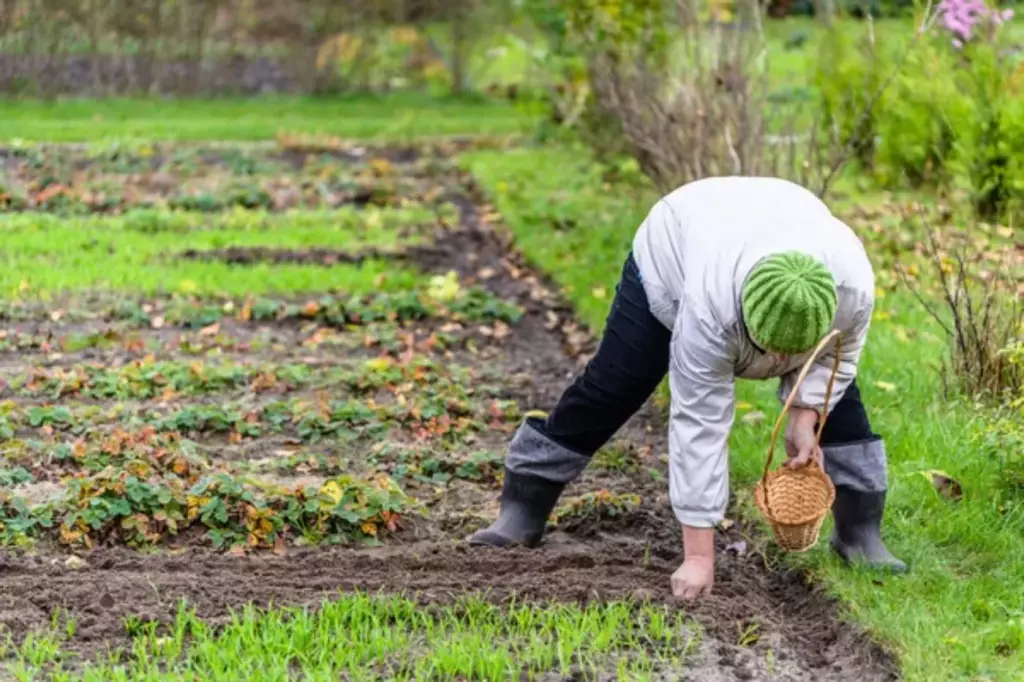
How do I calculate how much garlic I need to grow?
To estimate how much garlic to grow, start by determining the desired yield in pounds. One acre of well-cared-for garlic can typically produce about 10,000 pounds.
Each pound of garlic seed can plant a bed roughly 30 feet long at standard spacing. You will need to plant about 5-10 pounds of garlic seed for every 1,000 square feet.
| Desired Yield (lbs) | Seed Garlic (lbs) | Bed Length (feet) |
|---|---|---|
| 100 | 20-25 | 600-750 |
| 200 | 40-50 | 1200-1500 |
| 500 | 100-125 | 3000-3750 |
| 10,000 | 2000-2500 | 60,000-75,000 |
To calculate the number of garlic bulbs you can harvest: assume each pound of seed garlic will produce 40-60 bulbs, depending on the variety and growing conditions.
For an acre, you can plant approximately 40,000-60,000 bulbs. When each plant reaches maturity, you'll harvest one bulb per plant, so your planting directly reflects your eventual harvest volume.
Remember that these numbers are estimates and actual yields may vary based on factors like garlic variety, soil health, and weather conditions during the growing season. Make sure to adjust your calculations based on the specific details of your growing environment.
Potential Yield and Profitability From Garlic Farming
In your venture into garlic farming, understanding the potential yield and profitability is crucial to your success. You'll need to consider factors like the variety of garlic and market conditions to accurately estimate these metrics.
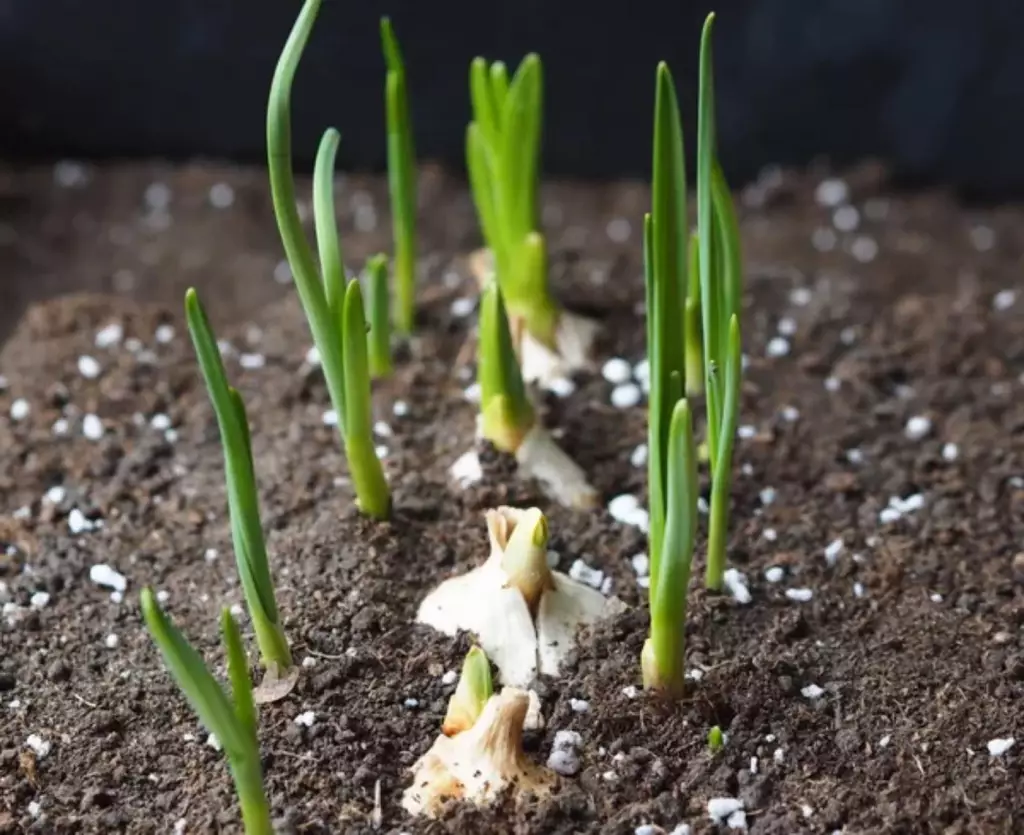
Estimated potential yield from garlic farming
When planning to plant garlic, you can aim to plant about 5 to 10 pounds of garlic seed per acre. This investment may yield between 40 and 60 pounds of garlic if you're planting hardneck varieties, and up to 60 to 100 pounds for softneck varieties.
| Garlic Variety | Pounds of Seed Per Acre |
|---|---|
| Hardneck garlic | 5 - 10 |
| Softneck garlic | 5 - 10 |
Considering the garlic's growing conditions, including the adequacy of curing and storage, will influence the final yield. Garlic's harvest time also influences yield, as premature or delayed harvesting can affect bulb size and quality.
Estimated profit potential from garlic farming
Garlic farming can be lucrative. Profit largely depends on the market price of garlic at the time of sale, which can vary depending on your location and the quality of your garlic crop.
Additionally, diversification in marketing your garlic can enhance profitability.
| Market Price Per Pound | Estimated Revenue per Acre |
|---|---|
| $2 | $80,000 - $200,000 |
| $3 | $120,000 - $300,000 |
| $4 | $160,000 - $400,000 |
Remember that your initial investment in seeds and ongoing costs for maintenance, marketing, curing, and storage also need to be subtracted from these gross revenue estimates to obtain your net profit. Learn more about the average profit for garlic farming per acre in this article.
Factors That Influence the Amount of Garlic Seed per Acre
The density at which garlic plants are grown is influenced by several factors, including the type of garlic, soil conditions, and climate. Let's delve deeper into these factors:
The garlic variety can impact plant density
Your specific garlic variety—whether hardneck or softneck—will impact plant density.
-
Hardneck garlic: Generally larger in bulb size, hardneck varieties require more space between plants. This is because the larger bulbs need more room to develop fully without competing with neighboring plants for nutrients and water.
-
Softneck garlic: These are usually smaller and can be planted more densely. Softneck varieties can thrive even when planted closer together, making them suitable for maximizing space and yield in a given area.
Soil fertility and nutrients play a role in determining how your garlic will grow
-
Garlic thrives in fertile soil that provides ample nutrients. The richer the soil, the better the conditions for garlic to grow robust bulbs.
-
Balancing nutrients like nitrogen, phosphorus, and potassium is crucial. Over-fertilization can lead to excessive foliage growth at the expense of bulb development, while under-fertilization can result in smaller bulbs.
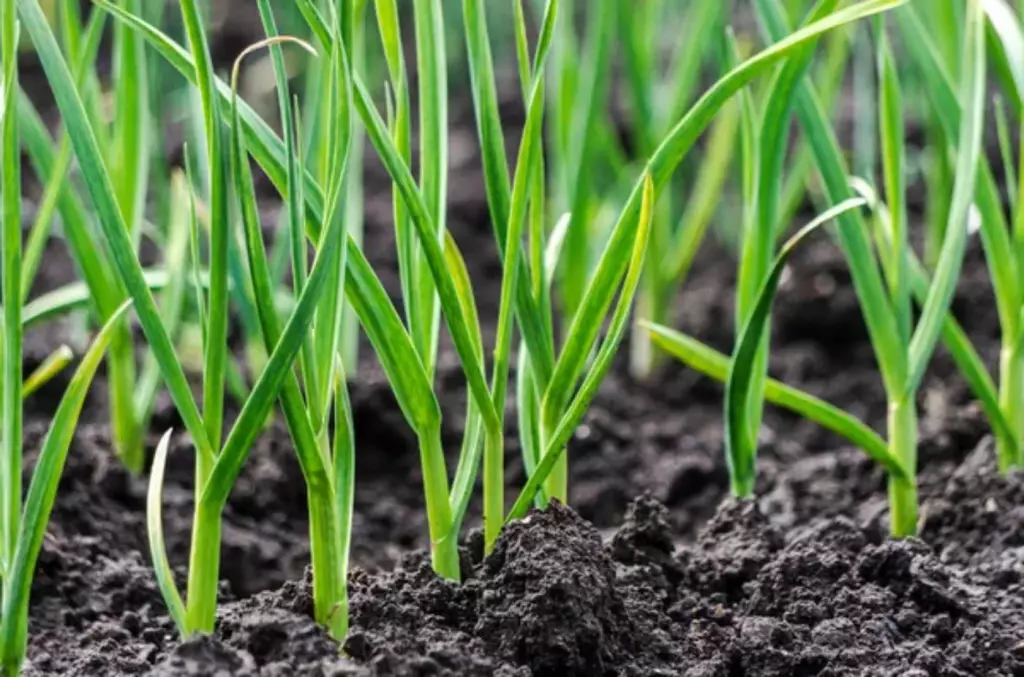
- Well-drained soil is essential. Waterlogged soil can lead to root diseases and negatively impact bulb size and quality.
Planning to cultivate garlic on pots? Here's what you need to consider.
Consistent watering can help maximize the number of viable bulbs per acre
Garlic needs a consistent supply of water to grow effectively. However, over-watering can be detrimental, especially close to harvest time, as it can lead to rotting bulbs.
Your region's climate can affect plant density
-
Garlic growth and the resulting plant density are affected by temperature. Hardneck varieties are more suited to cold climates as they are hardier and can survive harsh winters. In contrast, softneck varieties are ideal for warmer climates.
-
In regions with a shorter growing season, there might be a preference for varieties that mature faster, which could influence planting density.



